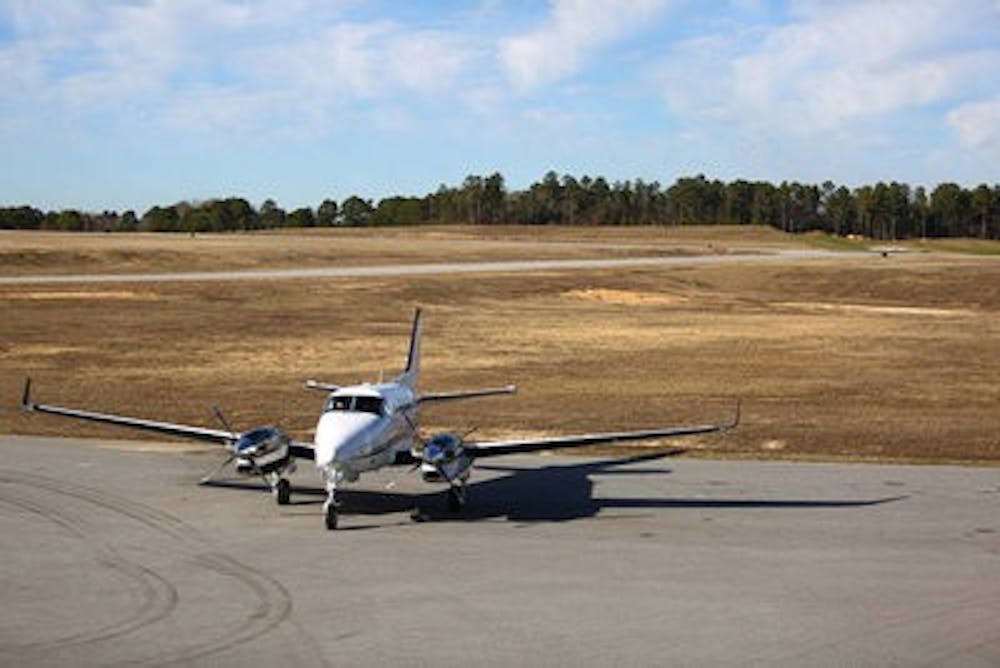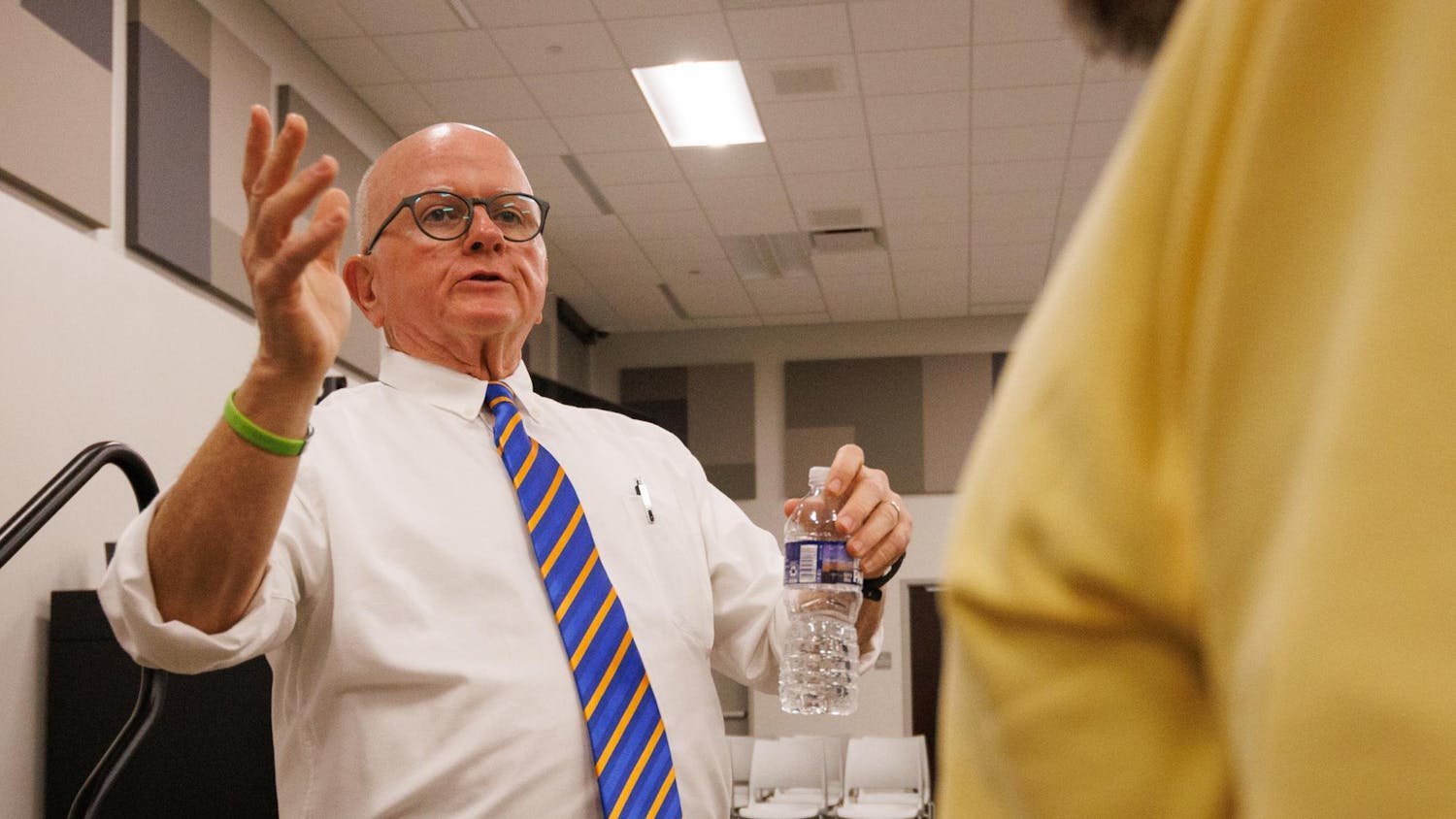Several high growing trees, which line the properties of the Auburn University Regional Airport and the Indian Pines public golf course, are to be cut down in order to maintain the safe keeping of FAA and the state of Alabama's air regulations and ordinances.
"It's all safety related," said Ron Pilz, the Auburn University director of air transportation. "We've gotten complaints from corporate pilots as well as passengers," regarding the proximity of the trees to the aircraft.
"We've had quite a few passengers that have said, 'Wow, those trees are pretty close,' and they are."
The plan to cut the trees has been discussed for quite some time but was only put into motion in the last few years.
"Probably about two years ago, they came to us and told us what needed to be done" said Kevin Pettit, the club manager and golf professional at Indian Pines Golf Course, "We said we wanted to do a one-time cut and get them all the way so they can have what they needed, but we needed a fair amount of funds to fix the course back and then everyone would be happy."
The compensation to Indian Pines for the cut is $225,000, though Pettit said he believes they deserve more and that the majority of the compensation is going to go toward the cutting and clearing of the trees.
"We have a $150,000 grant from the state," said Bill Hutto, the Auburn University airport director, "and then we offered up an additional $75,000 just to be a good neighbor."
Indian Pines is also covering the initial cost of cutting and clearing the trees, though they are to be reimbursed by the Auburn regional airport.
"I don't know how it changed, but we didn't get the funds that I think we need to get [the course] back looking to the way it needs to be," Pettit said. "I don't think the University anted up on their part."
Though Pettit may disagree with the amount of compensation, he said he is not highly concerned the loss of the trees will impact the overall play of the course.
However, approximately three-quarters of the golf course will be affected, and it will change about four holes pretty severely, according to Pettit.
The majority of the damage expects to be seen in the looks and aesthetics of the course's design, "but it needed to be done," Pettit said.
Pilz said the damages to the course seem small in comparison to the what could happen if the trees are not removed.
"So much and so often in aviation safety, nothing is done until after the accident or incident," Pilz said. "It takes someone to get hurt, a serious accident, a lot of damage to an aircraft or even someone being killed before they move to make some correction to mitigate that obstacle or that cause of the accident. So this is in the long run, a good thing,"
Hutto said the flying public must be protected.
"We wouldn't be doing our jobs if we stuck our heads in the sand and ignored it," Hutto said.
Do you like this story? The Plainsman doesn't accept money from tuition or student fees, and we don't charge a subscription fee. But you can donate to support The Plainsman.





